As the impacts of climate change and nature loss increase, it is a good time to re-evaluate our office spaces and business practices, and set a path to a more sustainable future. We’ve put together tips below to encourage businesses and organisations, no matter how big or small, to start embedding sustainability into business as usual.
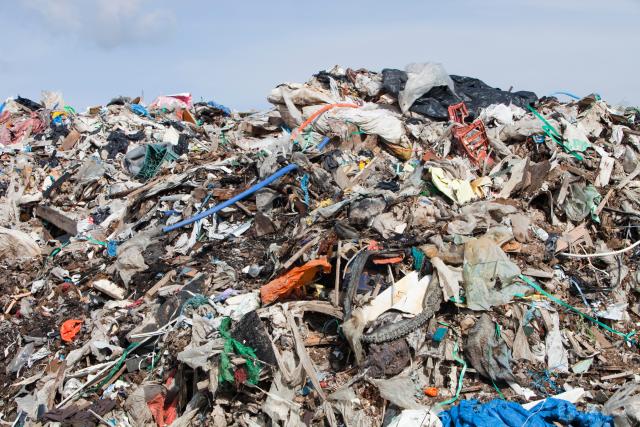
1. Green Energy
There has never been a better time to switch to 100% renewable energy! Prices are low and the planet will be much happier and healthier for it. To see how much you could save, for your organisation and the environment, try the Big Clean Switch today.
2. Check your suppliers
Credit scores are helpful but they’re not the only important factor. Research a company’s ethics and environmental practices. Ethical Consumer Magazine rates companies on their ‘ethiscore’ – an assessment of policies and actions towards people, politics, the environment and animals, looking at issues such as workers’ rights, fossil fuel investment, and pollution. Telling suppliers that ethical or environmental aspects matter to your business sends a clear message that things need to change!
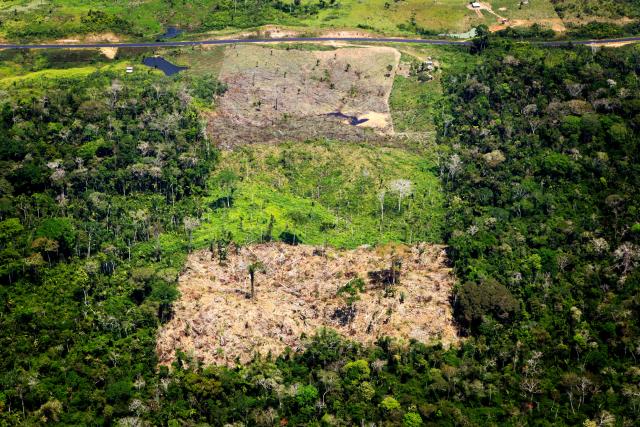
3. Sustainable procurement
Develop a sustainable purchasing policy. This is a list of typical businesses purchases (i.e. electronics, textiles, food, metals, chemicals), with details about what staff can and cannot purchase, and what they should look for, or avoid, when trying to purchase sustainable options. Use internal and external expertise, online research and independent advice guides. Certifications are useful, such as recommending that Fairtrade or Soil Association Organic labels are preferred over non-labelled products.
4. Deforestation-free paper
We all use paper in some form. If paper doesn’t say where it’s come from, we can’t guarantee it’s not linked to deforestation. We can all take steps to protect forests globally by ensuring that the paper we use is 100% recycled or FSC certified. If you think recycled paper is always off-white and flimsy, times have changed! You can get 100% recycled paper that’s indistinguishable from virgin paper.

5. Measure your carbon footprint
Emissions are grouped into Scopes (Scope 1 are directly produced by your organisation such as fleet vehicles or on-site energy production, Scope 2 are emissions from purchased energy, and Scope 3 are indirect emissions you are responsible for such as staff travel). Making sure you account for Scopes 1 and 2 is essential and covering significant Scope 3 emissions is a great step to tackling climate change. You can seek advice from emissions reporting organisations such as CDP, use online calculators such as Climate Care, or calculate your own emissions using the Greenhouse Gas Protocol and DEFRA’s carbon conversion factors.
6. Set reduction targets
Once we know the size of our footprint, we can reduce it. Look at your average annual footprint, then set targets to reduce it. You could start small with a goal of reducing travel emissions by 5% over the next 3 years. You can also set targets that aren’t emissions-based, such as reducing energy or water use by 2% a year. Set ambitious but achievable targets and report against these publicly on your website. This shows dedication to the environment, responsibility for your impacts, and that you’re willing to be held accountable to your stakeholders. To take it further, set a Science-Based Target, a public commitment to reduce your emissions in-line with a 1.5°C level of global warming.

7. We love the waste hierarchy
Think about the last item you threw away, now imagine the resources that went into it – the raw materials grown or made, the energy, the water, the manpower, the shipping etc. All to be thrown away or recycled. We can conserve the planet’s precious resources by remembering the waste hierarchy. Refuse (stop purchasing or accepting items), reduce (buying in bulk, reducing quantities, reducing packaging), reuse (reusable options, reusing containers and packaging), recycle (recycle as much as possible), rot (composting food waste, anaerobic digestion), and finally energy recovery (incineration of general waste rather than sending it to landfill).
8. Reduce disposable plastics
Not all plastic is evil. Plastic can be useful; it’s lightweight, easy to transport, and flexible. However, it comes at an environmental cost and can cause harm to habitats (such as our oceans). We’ve become victims of the convenience disposable plastics offer, but we can reverse this! Look at the disposables on offer in your workplace (plastic cutlery, disposable cups, Sellotape, bubble wrap, plastic packaging, envelope windows etc.) and decide if you can make reusable, sustainable swaps.

9. Planet-friendly travel
The global pandemic has shown us that not all business travel is as necessary as we thought and actually video conferencing can be an effective alternative., As we start to return to our offices we can do more to promote lower carbon options for travelling in future. Video conference instead of travelling, take public transport over taxis and driving, choose the train over a plane. Set a time-based limit on when a flight is permitted (i.e. journey time of 10hrs+ from the UK to destination will require a flight, but under 6hrs is a return train). Developing a travel policy sets a commitment as an organisation and helps advise staff on how they should be travelling.
10. Take part in Earth Hour
We are in a climate and nature emergency. Our planet has warmed by 1°C over the last century. Climate change is wreaking havoc on our wildlife and habitats, and is putting people’s lives and homes at risk. Take part in Earth Hour to join the fight for our world and showing solidarity.

11. Become a certified environmentally conscious organisation
Want to prove you care about your environmental impact and save money in the long-run? Becoming certified to the international standard on Environmental Management (ISO 14001) demonstrates commitment to continuous improvement of environmental performance, reducing your negative impacts and increasing efficiency. If you can’t afford to be certified, you can conduct a gap analysis and start working towards this standard anyway.
12. Take a look at your finances
When we think about sustainability we often forget to look at where our money is invested. Company pensions are a good example – how many of us have questioned employers about where our pensions are invested? Unfortunately, many pensions and other investments are supporting harmful industries such as fossil fuels, deforestation, weapons and tobacco. Ask your employer, or ask your pension provider directly, where your money is invested and ask to switch to a planet-friendly portfolio.
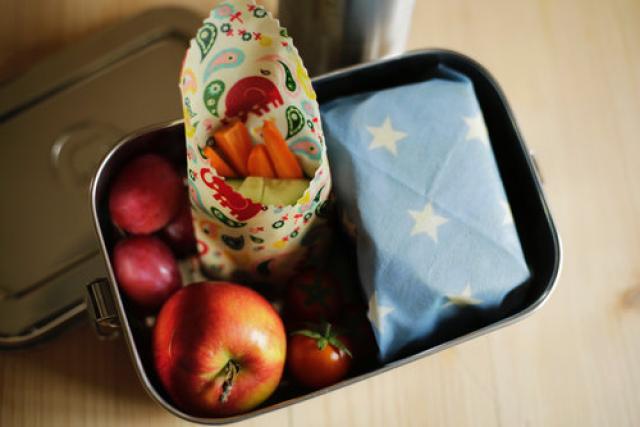
13. Think about food
Food accounts for 70% of global biodiversity loss and around a third of global emissions. We can all do more to reduce the environmental impacts from food. When catering meetings or events, could at least 50% of the food we serve be vegan? Can we ensure that we serve less meat but better quality (i.e. free range, organic, high-welfare)? If serving biscuits and snacks can we make sure they contain only RSPO-certified sustainable palm oil? People may be hesitant to try a vegetable sausage, but vegan and veggie options are so convincing now it’s difficult to tell the difference!
14. Life cycle thinking
We’re taught to love bargains – buy lots and buy it cheap. But this comes at a high price to the planet! Focusing on life-cycle thinking benefits businesses in the long-run; choose products built to last, choose repairable, choose recycled. It’s not just a case of which uses the least resources to produce that item, follow it through from cradle to grave. For example, did you know there are now mobile phones which are repairable? FairPhones consider all aspects of production, allow you to replace the parts and update the software yourself, and you can return it to them to recycle it.
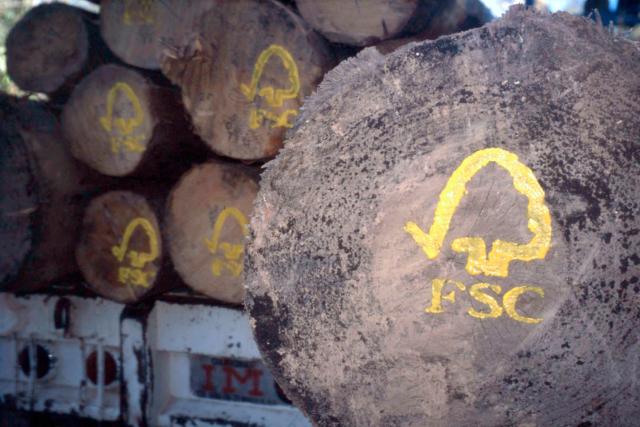
15. Print less, go digital
According to Kyocera the average UK office worker prints 6,000 sheets of paper a year, of which around 62% is wasted or unnecessary. Encourage staff to make use of digital tools and software that reduces the need for print, such as Adobe Sign or digital proofing tools, and produce more reports digitally instead. Also consider other initiatives such as setting the default on printers to printing black and white, and double-sided, or for even more of a challenge try setting a maximum sheets-per-person printing target.
16. Tell your stakeholders what matters to you
62% of millennials surveyed want to work for an organisation that makes a positive impact on the planet. It’s not just millennials though, more and more people are interested to know what companies are actually doing to help the climate crisis because time is ticking. Reducing your environmental footprint and telling others why you’re doing it helps the planet, makes you more attractive for prospective employees and sets a standard for other organisations in your industry.
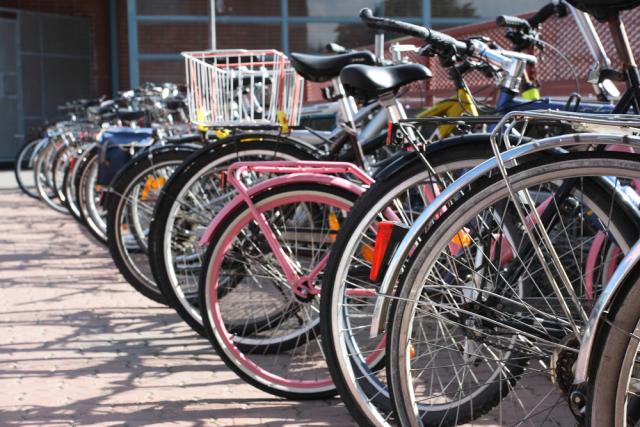
17. Give back to the local environment and community
We are global citizens, protecting and connecting our planet, but part of this means taking care of our local communities and environments too. Roll up those sleeves and help those around you. Setting up an annual volunteering day with a local charity (such as a Wildlife Trust, a foodbank or area litter-picking group) is a great way to give back as an organisation and achieve positive good in your community. It also benefits staff wellbeing by heading out into nature and bonding without the stress of emails and workload! You can also benefit biodiversity in your area by planting a wildflower meadow in your green space or installing bird boxes and insect hotels.
18. Offset your carbon carefully
Heading for net zero is encouraging more businesses to consider how to reduce their carbon footprint. Offsetting seems like a quick win to achieve this. However, offsets should always be the absolute last resort in a hierarchy of prevention, reduction, investment, offsetting. Prevent emissions by reducing the number of trips taken, reduce emissions by saving energy or taking lower carbon options for trips, and invest in your own renewable energy (can you install solar panels, can you connect to a local renewable energy source). If you are looking to offset, we use Gold Standard certified projects. These provide long-term carbon reduction solutions, demonstrate environmental integrity and contribute to sustainable development. A useful guide to offsetting can be found here.
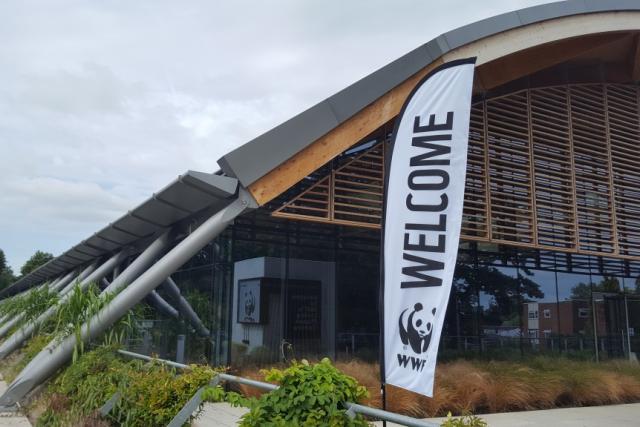
19. Get a plant …or two
Investing in a few office plants can create a calm and happier environment which boosts productivity. Plants can serve a useful function by absorbing toxins from the air (often emitted by printers) as well as looking beautiful and making us all much happier.
20. Our planet: our business
And finally, following the launch of our award-winning series Our Planet (narrated by David Attenborough and available on Netflix) we’ve put together a free short film for businesses to show to staff (or vice versa) – Our Planet: Our Business. We know that drastic changes are needed to avoid catastrophic changes to our planet, and to achieve this we must reimagine ‘business as usual’. Wherever you work, whatever sector you work in, you can fight for your world by sharing this film with the people you work with and doing your best to implement the 20 tips above.
Sustainable Office Guide
We’ve put together a Sustainable Office Guide with many more practical tips and instructions for measuring footprints and helping our planet. To download a free copy of the guide click here.

 Ways to help our world in 2026
Ways to help our world in 2026
 Here are 10 myths about climate change
Here are 10 myths about climate change
 8 things to know about palm oil
8 things to know about palm oil
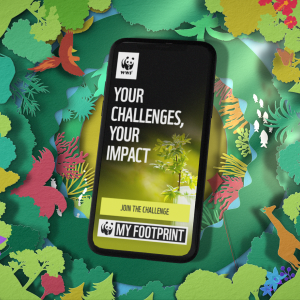 Download WWF's My Footprint app
Download WWF's My Footprint app